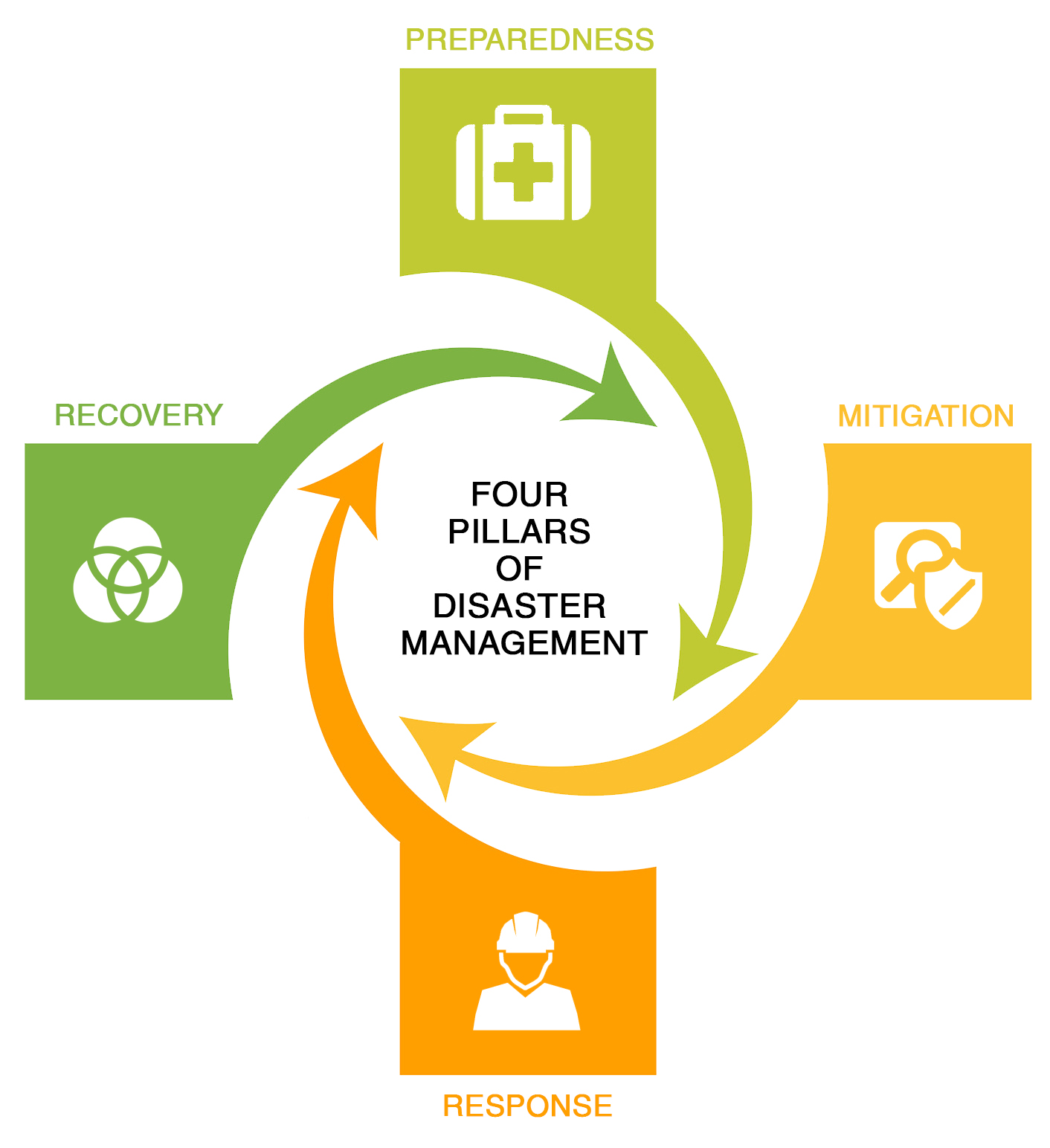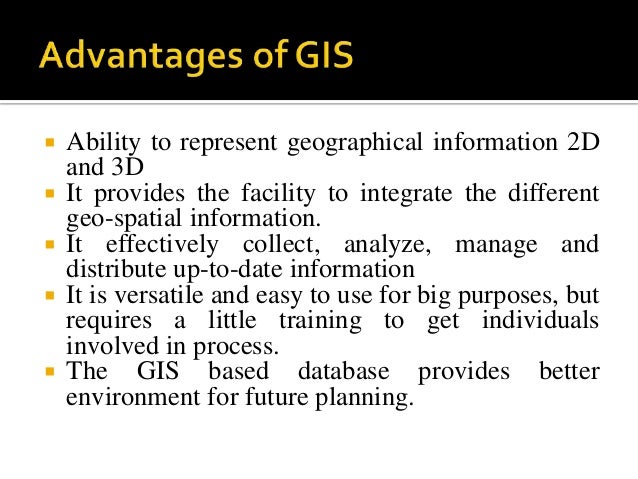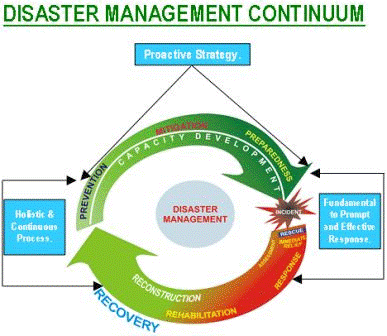Benefits Of Gis In Disaster Management
management wallpaperValue of GIS in emergency management arises directly from the benefits of integrating a technology designed to support spatial decision making into a field with a strong need to address n umerous. GIS allows emergency management needs to be identified prior to an incident.

Pdf Disaster Management Using Gis Technology A Case Study In Taiwan
As opposed to legacy computer-aided design CAD mapping systems where information was stored largely on paper maps making it virtually impossible to maintain and.

Benefits of gis in disaster management. The national government recommends developing an ICT Information and Communications Technology-Business Continuity Plan ICT-BCP which guides government officials how to continue ICT facilities after a disaster 6. A Guide to GIS Applications in Integrated Emergency Management Emergency Planning College Cabinet Office. Mitigation strategies prior to natural disasters are essential to reduce loss of life and property by.
GIS coupled with remote sensing will act as an apt tool in assessment of damage and losses incurred. At its core enterprise GIS is one of the most important tools utilities need when responding to a major disaster. Considering we cannot prevent natural disasters it is important to determine potential hazards.
Track geological weather and traffic patterns. And they could facilitate. Agencies around the world rely on geographic information every day to plan for and mitigate complex threats and hazards and coordinate response and recovery efforts when disasters and emergencies occur.
A general disaster management plan defines a chain of command in the time of a disaster. GIS will act as a central database repository during the recovery phase of a disaster. GIS are able to integrate information from different sources scales accuracies and formats into a single source.
Map crime and plan emergency response teams gis tool for disaster management how gis can aid emergency management develop geospatial lications 1000 gis lications uses how. It has the ability of improving the organizational integration. It is far easier to accomplish this task before an attack or emergency than in its aftermath.
Centralized readily available highly accurate spatial information. Its also useful for Impact assessment. BENEFITS OF GIS FOR RISK MANAGEMENT GIS proves an important aid for risk management Gathering data to create a GIS to meet potential emergencies requires an immediate and concentrated effort.
And assess damage in. Organizations such as the US. GIS can be used for situational awareness for identifying ideal locations for prepositioning assets.
Through advanced wireless technologies and web-based GIS applications disaster management by governments and other agencies is being revolutionized and is enhancing the coordination of response efforts as well as planning for disaster risk reduction. Disaster events such as wildfires tsunami floods earthquakes hurricanes epidemics chemical cloud dispersion and oil spills can be modeled and displayed in GIS. These kind of spatial data assessment give information on the extent of damage to individual properties and aerial coverage of the damage.
GIS coupled with remote sensing provides a basic framework that helps in all the stages of disaster management starting from preparedness to response and recovery. Geospatial tools in emergency management activities. Note on the Use of Mapping in Scenarios In addition to a series of case studies a number of hypothetical scenarios are used in this guide and Ordnance Survey StrategiTM data are combined with fictional data to illustrate these scenarios.
It is also an analytical data management and visualization tool. GIS is more than mapping. GIS would then integrate software hardware and also data in order to capture analyse manage and so display all forms of information being geographically referenced.
The modern growth of geospatial technology positively interacts with and influences all aspects of disaster management such as mitigation modeling hazards and vulnerability to develop strategies preparedness formulating emergency response and evacuation plans response executing such plans and recovery assessing damages rebuilding preventing recurrence and educating the public. Utilities employ enterprise GIS in large part to simplify data management and improve the availability of accurate asset and network information. The modern growth of geospatial technology positively interacts with and influences all aspects of disaster management such as mitigation modeling hazards and vulnerability to develop strategies preparedness formulating emergency response and evacuation plans response executing such plans and recovery assessing damages rebuilding preventing recurrence and educating the public.
How GIS is Used in All Phases of Emergency Management Mitigation. Department of Agriculture USDA Federal Emergency Management Agency FEMA and the Department of Defense as well as state and local government branches utilize GIS to determine government application use. Here are some of the advantages of using GIS technology.
GIS can be useful for monitoring historical sites of earthquake also to Response data management for recovery. View first-person photos of local state and regional natural and man-made disasters. Emergency preparedness is the actions taken in advance that develop operational capabilities enabling a.

Disaster Management And Risk Reduction Impacts Of Sea Level Rise And Other Hazards Related To Tsunamis On Syrian Coastal Zone Springerlink

Pdf Gps Application In Disaster Management A Review

Disasters Can Also Be Caused Or Brought Forward By Hazards That Are Man Made Pollution Deforestation And Ozone Deplet Disasters Ozone Depletion Deforestation

Pdf Economic Analysis Of Disaster Management Investment Effectiveness In Korea

Role Of Gis In Disaster Management

Improving Disaster Management The Role Of It In Mitigation Preparedness Response And Recovery 20 Preparedness Disaster Response Disaster Preparedness Kit

Application Of Gis In Natural Disaster Management

Pdf Geographic Information Systems For Disaster Response A Review

Pdf The Role Of Big Data In Disaster Management

Pdf Application Of Gis And Remote Sensing In Disaster Management A Critical Review Of Flood Management

The Disaster Preparedness Framework Download Table

Smart Cities With Digital Twin Systems For Disaster Management Journal Of Management In Engineering Vol 36 No 4

Pdf Disaster Preparedness Current Trends And Future Directions

About Disaster Management Ifrc

Pdf Challenges For The Application Of Gis Interoperability In Emergency Management

Pdf Social Media In Disaster Management How Social Media Impact The Work Of Volunteer Groups And Aid Organisations In Disaster Preparation And Response
